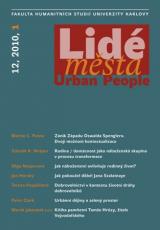Der Untergang des Abendlandes by Oswald Spengler
Two Ways of Contextualization
DOI:
https://doi.org/10.14712/12128112.3623Keywords:
Oswald Spengler, Western civilization, NazismAbstract
The controversial work of Oswald Spengler Der Untergang des Abendlandes is interpreted not through the analysis of the text, but through its context. One contextualization is “synchronic”. It takes into account the mental atmosphere of the époque of the nascence and the first reception of the work. It is particularly in this “synchronic” context that Spengler’s work appears as objectionable, both politically and academically. Another contextualization is “diachronic”. It takes into account the history of the “genre” of the work, i.e., the history of “books about creativity” and of “books about crisis”. Spengler’s work is recognized as a shackle in a chain of works, such as Macrobius’ Saturnalia, Martianus Capella’s Wedding of Mercury and Philology, Vico’s The Principles of the New Science, Novalis’ The Blue Flower or Danilevsky’s Russia and Europe. As the majority of such works, Spengler’s work appears not to be a “pure” scientific work, but a work on the edge between science and literature. In this kind of works, the aesthetical appeal is inseparable from the rational argumentation. That is why a new way of reading and interpreting Spengler’s work might be opened.
Downloads
Published
How to Cite
Issue
Section
License

This work is licensed under a Creative Commons Attribution-NonCommercial-NoDerivatives 4.0 International License.


